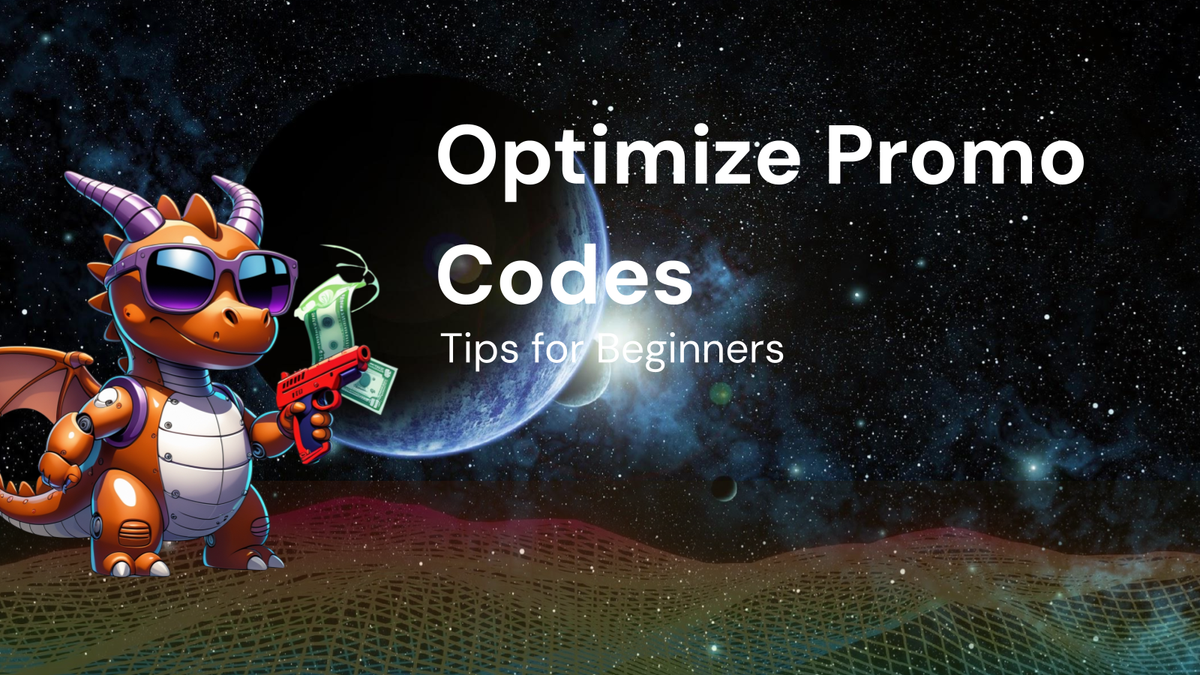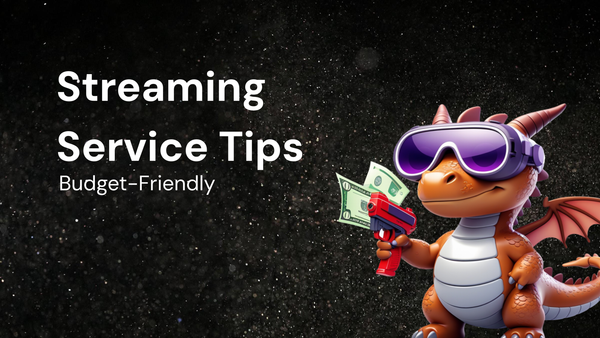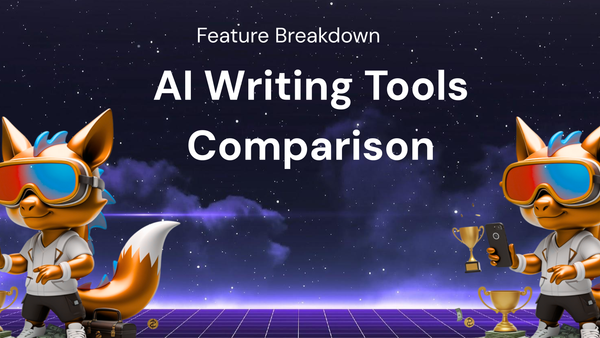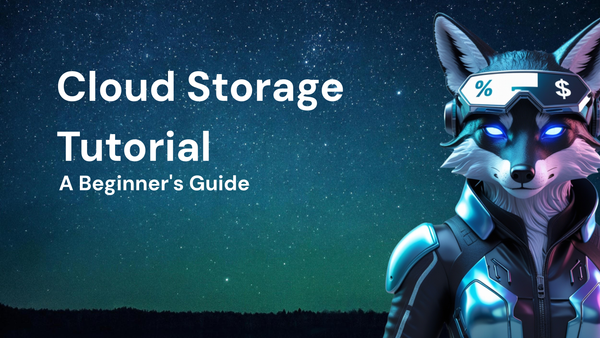Top 10 Tips for Beginners to Optimize Promo Codes

Top 10 Tips for Beginners to Optimize Promo Codes
Promo codes, discount codes, coupon codes – whatever you call them, these short alphanumeric strings are powerful tools for driving sales, acquiring new customers, and building brand loyalty. But simply slapping a discount on your products and generating a random code isn't enough. To truly leverage the potential of promo codes, you need a strategic approach. This guide offers ten essential tips for beginners to optimize their promo code strategy and maximize their impact.
1. Define Clear Objectives and KPIs
Before you even think about generating a promo code, you need to understand why you're using it. What are you hoping to achieve? Are you trying to:
- Increase sales volume: Drive more transactions, particularly during slow periods or for specific product lines.
- Acquire new customers: Entice first-time buyers to try your product or service.
- Reward loyal customers: Show appreciation and encourage repeat purchases.
- Clear out excess inventory: Move outdated or slow-selling items to free up space.
- Promote a new product launch: Generate excitement and initial sales for a new offering.
- Drive traffic to your website: Increase overall site visits and engagement.
- Increase average order value (AOV): Encourage customers to spend more per transaction.
- Boost email sign-ups or social media followers: Offer a discount in exchange for contact information or social engagement.
Once you've identified your objectives, you need to define Key Performance Indicators (KPIs) to measure the success of your promo code campaign. These could include:
- Redemption rate: The percentage of issued promo codes that are actually used.
- Conversion rate: The percentage of users who visit your site and make a purchase using the promo code.
- Average order value (AOV): The average amount spent per transaction using the promo code.
- Revenue generated: The total revenue attributed to the promo code campaign.
- Customer acquisition cost (CAC): The cost of acquiring a new customer through the promo code.
- Website traffic: The increase in website traffic during the promo code campaign.
- Email sign-ups/social media followers: The number of new subscribers or followers gained through the promo code.
Having clearly defined objectives and measurable KPIs will allow you to track your progress, identify what's working, and make adjustments to optimize your strategy for future campaigns. Without them, you're just throwing discounts into the void without knowing if they're actually effective.
Example:
- Objective: Acquire new customers.
- KPIs: Redemption rate of the promo code, conversion rate of users who use the promo code, customer acquisition cost, number of new email sign-ups.
2. Segment Your Audience for Targeted Offers
One-size-fits-all promo codes rarely deliver the best results. Instead of blasting the same discount to everyone, segment your audience and tailor your offers to specific groups. This ensures your promos are relevant and appealing to the target audience, increasing the likelihood of redemption and conversion.
Here are some common ways to segment your audience:
- New vs. Returning Customers: Offer a larger discount to attract new customers, and a smaller, loyalty-focused discount to reward existing ones.
- Demographics: Target specific age groups, genders, or geographic locations with relevant offers.
- Purchase History: Offer discounts on products similar to those they've purchased before, or entice them to try new products within a category they've shown interest in.
- Email List Segmentation: Tailor offers based on email engagement, such as rewarding subscribers who frequently open your emails with exclusive discounts.
- Abandoned Cart Users: Offer a discount to encourage users who left items in their cart to complete the purchase.
- VIP/Loyalty Program Members: Provide exclusive discounts and perks to your most loyal customers.
By segmenting your audience, you can create more personalized and effective promo codes that resonate with individual customer needs and preferences. This leads to higher redemption rates, increased customer engagement, and ultimately, a better return on investment.
Example:
- Segment: New customers
- Promo Code: WELCOME15 (15% off first purchase)
- Segment: Loyal customers (members of your loyalty program)
- Promo Code: VIP20 (20% off all orders)
3. Choose the Right Discount Structure
The type of discount you offer can significantly impact its effectiveness. Consider these common discount structures:
- Percentage Discount: A percentage off the total purchase price (e.g., 10% off). This is a simple and easily understood option.
- Fixed Amount Discount: A specific dollar amount off the total purchase price (e.g., $10 off). This can be more appealing to customers making larger purchases.
- Free Shipping: Waiving shipping costs. This is a popular incentive, particularly for online purchases.
- Buy One Get One (BOGO): Offer a free item when a customer purchases another. This is effective for moving specific products or clearing out inventory.
- Free Gift with Purchase: Offering a complimentary gift with a purchase of a certain value. This can add perceived value and excitement to the transaction.
- Tiered Discounts: Offer increasing discounts based on the amount spent (e.g., $10 off $50, $20 off $100). This incentivizes customers to spend more.
- Category-Specific Discounts: Offering discounts on specific product categories. This can help promote slow-selling items or introduce customers to new product lines.
When choosing a discount structure, consider your profit margins, target audience, and the specific goal of your campaign. A percentage discount might be best for driving overall sales, while a free gift with purchase could be more effective for promoting a new product launch. Experiment with different structures to see what resonates best with your audience.
Example:
- Goal: Increase average order value.
- Discount Structure: Tiered discount: $10 off $50, $20 off $100, $30 off $150.
4. Set Clear Terms and Conditions
Ambiguity and hidden limitations can lead to frustration and damage your brand reputation. Be transparent about the terms and conditions of your promo code offer. This includes:
- Expiration Date: Clearly state when the promo code expires.
- Minimum Purchase Requirement: Specify any minimum purchase amount required to use the code.
- Eligible Products/Categories: Indicate which products or categories the promo code applies to.
- Geographic Restrictions: If the code is only valid in certain regions, make this clear.
- One-Time Use Limitation: State if the code can only be used once per customer.
- Stacking Restrictions: Clarify whether the code can be combined with other offers or promotions.
- Return Policy: State how the discount affects the return policy.
Make these terms and conditions easily accessible to customers – preferably on the same page where they find the promo code. Using clear and concise language will prevent misunderstandings and ensure a smooth customer experience.
Example:
- Promo Code: SUMMER20
- Terms and Conditions: Valid until July 31, 2024. Minimum purchase of $50 required. Applicable to all summer clothing items only. One-time use per customer.
5. Make Your Promo Codes Easy to Find and Use
A well-crafted promo code is useless if customers can't find it or struggle to apply it. Make your promo codes easily accessible and simple to use.
- Prominent Placement: Display promo codes prominently on your website, in emails, and on social media.
- Clear Call to Action: Use compelling calls to action that encourage customers to use the code (e.g., "Shop Now and Save 20%!").
- Easy Copy and Paste: Make it easy for customers to copy and paste the code by providing a dedicated "copy" button or highlighting the code for easy selection.
- Simplified Checkout Process: Ensure the promo code field is clearly visible on the checkout page and that the discount is applied automatically once the code is entered.
- Mobile-Friendly Design: Optimize your website and emails for mobile devices to ensure promo codes are easily visible and usable on smartphones and tablets.
Reduce friction and make it as effortless as possible for customers to redeem your promo codes. A seamless user experience will increase redemption rates and drive more sales.
Example:
- Display the promo code prominently at the top of your website with a banner that reads: "FLASH SALE! Use code SPRING25 for 25% off!"
- Include a "Copy Code" button next to the promo code in your email marketing campaigns.
6. Promote Your Promo Codes Effectively
Generating a great promo code is only half the battle. You need to promote it effectively to reach your target audience. Consider these channels:
- Email Marketing: Send targeted emails to your subscribers announcing the promo code, highlighting its benefits, and providing a clear call to action.
- Social Media: Share the promo code on your social media channels, using engaging visuals and compelling copy. Run contests and giveaways to further promote the code.
- Website Banners and Pop-ups: Display promo codes prominently on your website using banners and pop-ups.
- Paid Advertising: Use paid advertising platforms like Google Ads and Facebook Ads to target specific demographics and interests with your promo code.
- Influencer Marketing: Partner with relevant influencers to promote your promo code to their followers.
- Affiliate Marketing: Work with affiliate marketers to promote your promo code on their websites and social media channels.
- SMS Marketing: Send text messages to your subscribers with the promo code and a link to your website.
Choose the channels that are most relevant to your target audience and tailor your messaging to each platform. Don't be afraid to get creative and experiment with different promotional tactics to see what works best for your business.
Example:
- Run a Facebook ad targeting women aged 25-45 with an interest in fashion, promoting a promo code for 20% off all dresses.
7. Monitor and Analyze Your Results
Tracking and analyzing your results is crucial for optimizing your promo code strategy. Monitor your KPIs (as defined in step 1) to assess the performance of your campaign. Pay attention to:
- Redemption Rate: How many people are actually using the code? A low redemption rate might indicate the code isn't appealing or that it's not being promoted effectively.
- Conversion Rate: Are people who use the code actually making a purchase? A low conversion rate might suggest issues with your website or checkout process.
- Average Order Value (AOV): Is the code encouraging people to spend more? If not, you might need to adjust your discount structure.
- Revenue Generated: How much revenue is the code driving? Compare this to the cost of offering the discount to determine the profitability of the campaign.
- Customer Acquisition Cost (CAC): How much does it cost to acquire a new customer through the promo code? Is this cost acceptable?
Use analytics tools like Google Analytics and your e-commerce platform's built-in reporting features to track these metrics. Analyze the data to identify what's working and what's not.
Example:
- You notice a low redemption rate for a promo code targeted at new customers. You investigate and find that the minimum purchase requirement is too high. You lower the minimum purchase and see an increase in the redemption rate.
8. A/B Test Different Promo Code Strategies
Don't settle for the first promo code strategy you come up with. A/B testing allows you to compare different approaches and identify the most effective one.
Test different variables, such as:
- Discount Amount: Compare different percentage discounts (e.g., 10% vs. 15% vs. 20%).
- Discount Structure: Test different discount structures (e.g., percentage discount vs. fixed amount discount vs. free shipping).
- Promo Code Wording: Try different wording for your promo code (e.g., "SAVE10" vs. "GET10OFF").
- Call to Action: Experiment with different calls to action (e.g., "Shop Now" vs. "Get Your Discount" vs. "Claim Your Offer").
- Target Audience: Test different audience segments to see which responds best to the promo code.
- Placement: Test different placement options for your promo code (e.g., website banner vs. pop-up vs. email).
Use A/B testing tools to randomly assign different versions of your promo code strategy to different groups of users. Track the results and determine which version performs best based on your KPIs. Continuously test and refine your strategy to optimize your results.
Example:
- A/B test two different calls to action in your email marketing campaign: "Shop Now and Save 20%" vs. "Claim Your 20% Discount Now!". Track which call to action generates a higher click-through rate.
9. Create a Sense of Urgency and Scarcity
Urgency and scarcity can be powerful motivators. By creating a sense of urgency and scarcity around your promo codes, you can encourage customers to act quickly and make a purchase.
Here are some tactics you can use:
- Limited-Time Offers: Set an expiration date for your promo code and emphasize the limited time available in your marketing materials.
- Limited Quantity: State that the promo code is only valid for a limited number of uses.
- Flash Sales: Run short, intense sales with significant discounts for a limited time.
- Countdown Timers: Use countdown timers in your emails and on your website to create a sense of urgency.
- Exclusive Offers: Offer exclusive promo codes to a select group of customers (e.g., email subscribers, loyalty program members) to create a feeling of exclusivity.
By creating a sense of urgency and scarcity, you can overcome customer hesitation and drive more sales.
Example:
- "Hurry! This offer ends at midnight! Use code SUMMER20 for 20% off your entire order!"
10. Don't Overuse Promo Codes
While promo codes can be effective, overuse can devalue your brand and train customers to only purchase when there's a discount available. Be strategic about when and how you use them.
- Avoid Constant Discounts: Don't offer discounts all the time. Save them for special occasions, holidays, or specific marketing campaigns.
- Focus on Value: Highlight the value of your products or services, rather than solely relying on discounts.
- Offer Exclusive Perks: Consider offering exclusive perks, such as free shipping, early access to sales, or loyalty rewards, instead of always relying on discounts.
- Use Promo Codes Strategically: Use promo codes to achieve specific goals, such as acquiring new customers or clearing out excess inventory, rather than simply as a general sales driver.
- Maintain Brand Equity: Protect your brand's image by avoiding excessive discounting, which can signal a lack of confidence in your products or services.
By using promo codes sparingly and strategically, you can maintain your brand's value and avoid training customers to expect discounts all the time.
Conclusion
Optimizing promo codes is a continuous process that requires careful planning, execution, and analysis. By following these ten tips, beginners can develop a more effective promo code strategy that drives sales, acquires new customers, and builds brand loyalty. Remember to define your objectives, segment your audience, choose the right discount structure, set clear terms and conditions, make your codes easy to use, promote them effectively, monitor your results, A/B test different strategies, create a sense of urgency, and avoid overuse. With a strategic approach, you can unlock the full potential of promo codes and achieve your business goals.




